Connectors Overview#
Connectors bring external data into your app's resources, enabling access to cloud storage, APIs, and other systems for user queries and interactions.
The next sections detail each option available for Connectors
- Managing Connectors: App permission Roles that can interact with Connectors.
-
Connectors Tab within the App Management Overview of your connectors and connector’s actions.
-
Types of Connectors: Overview of the supported connector types.
- Connectors Creation and Setup: How to set up a new Connector.
- Connector Details: View Connector’s configuration details and see the list of the dependant resources.
- Deleting Connectors: Remove a data connector from your App.
Learn more about setup of each of the Connector’s:
- HTTP Connector Configurations
- DuckDB Connector Configurations
- Snowflake Connector Configurations
- OpenAI Connector Configurations
Note
Learn more how to operate with the connectors inside SDK.
Managing Connectors within the App Portal#
Connectors are managed within the App Management page, where you can control how they are being used across dashboards and widgets.
The ability to interact with data connectors is governed by App permissions roles:
- Managers: Have full control over connectors, including creating, editing, deleting, and using them inside resources.
- Writers: Have full control over connectors, including creating, editing, deleting, and using them inside resources.
- Readers: Can view dashboards with data connectors but cannot create, edit, or delete connectors.

The Connectors Tab#
The Connectors page is a tab within the App Management page, it list all the data connectors in the App.
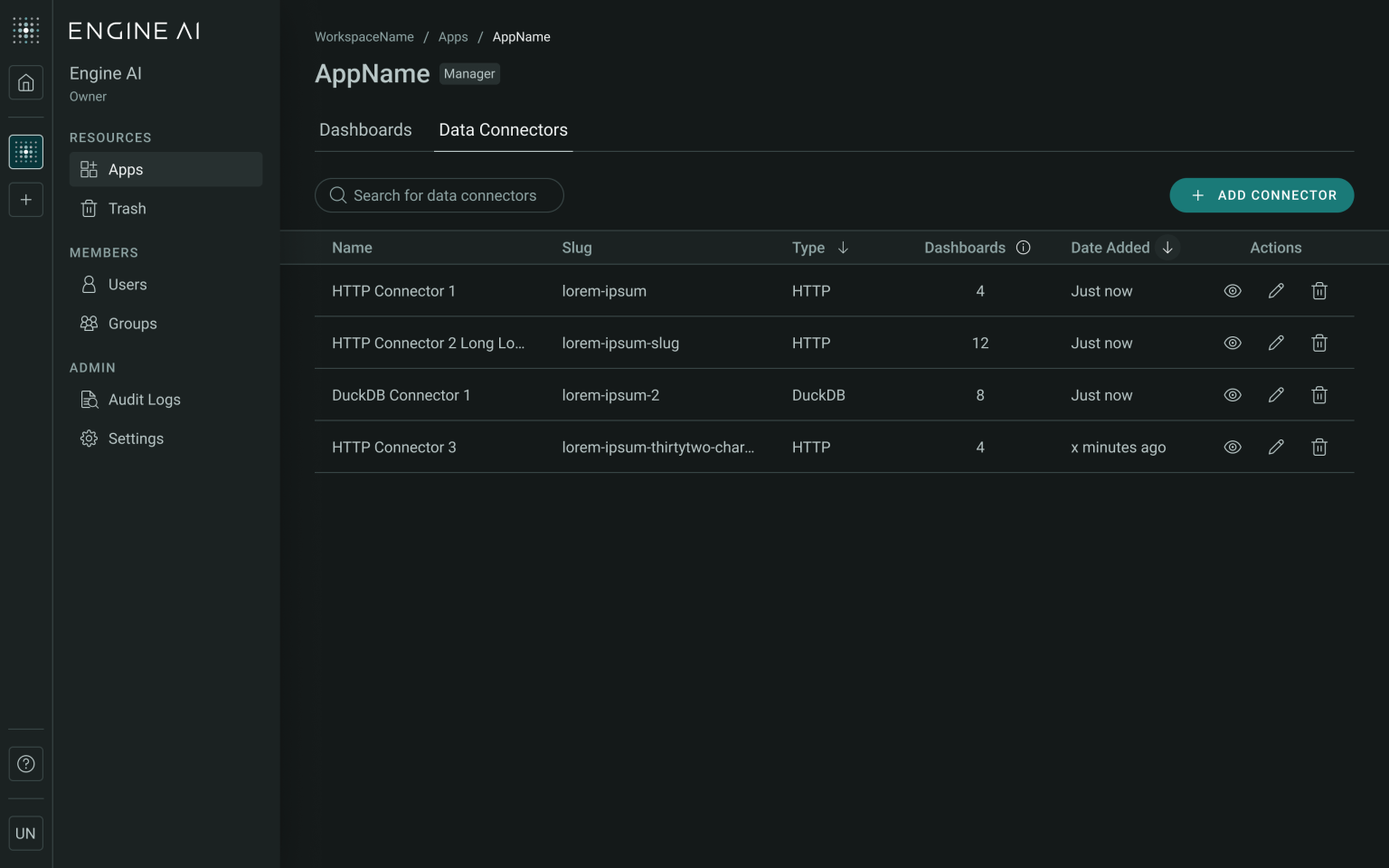
The Data Connectors table has actions to help you manage and configure data sources within your app:
- See Details: View information about the data source and associated resources.
- Edit Connector: Modify the configuration details of the data source.
- Delete: Delete the connector source from the app.
Types of Connectors#
Currently, we offer two types of connectors:
- Data Connector: A Data Connector allows users to integrate external data sources into their apps. It acts as a bridge between the platform and various databases, file storage systems, or APIs, enabling users to pull in and manipulate data for analysis and visualisation.
- LLM Connector: An LLM Connector enables AI-driven capabilities by integrating large language models, , into your apps. This allows users to leverage AI-powered data interaction.
Connectors that we support:
- HTTP Connector: Connect to any API endpoint to fetch data using HTTP requests.
- DuckDB Connector: Supports connections to multiple data sources and file formats.
- Snowflake Connector: Enables efficient querying, analysis, and visualisation of large-scale structured data from Snowlake.
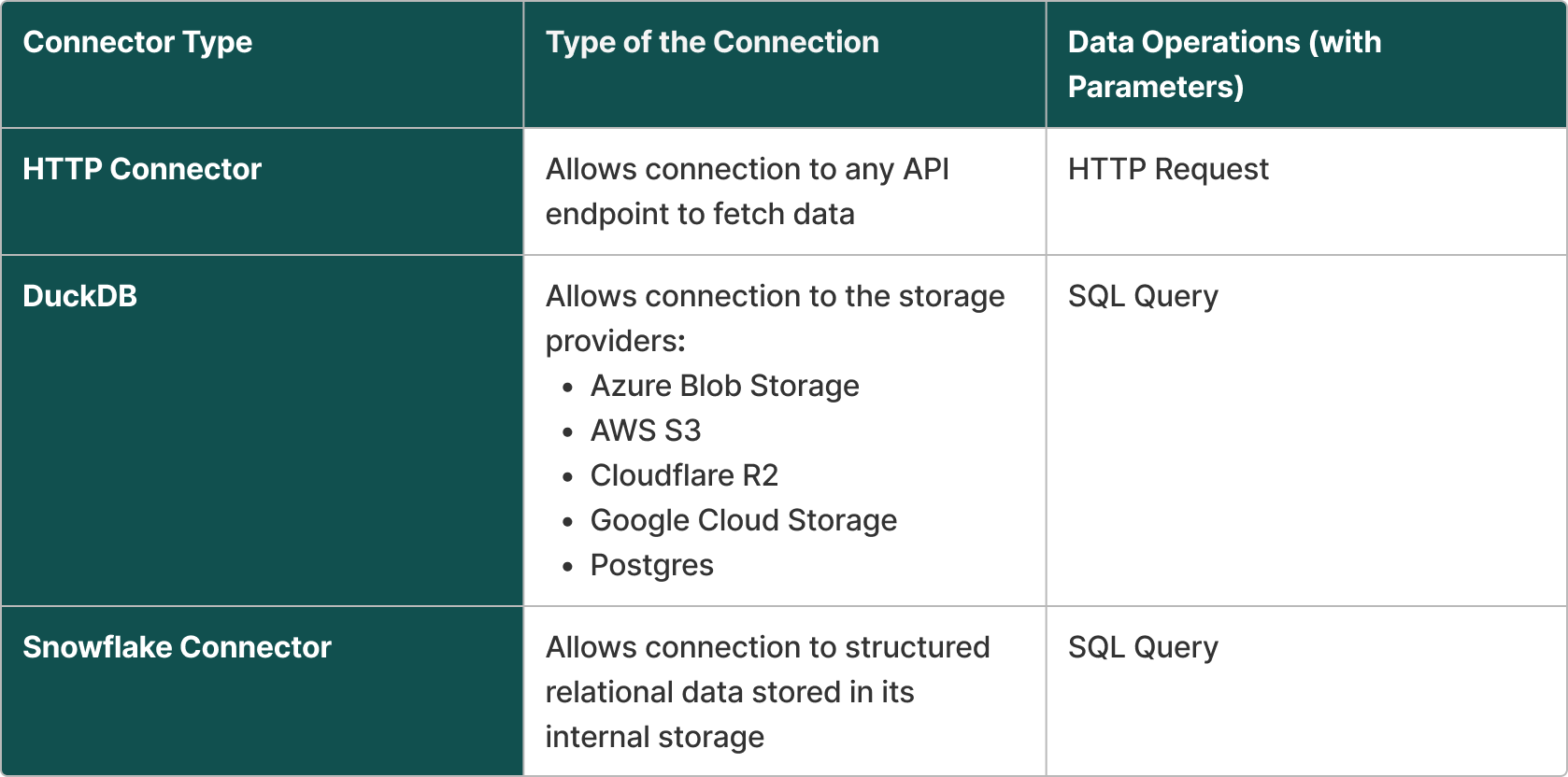
LLM Connectors that we support:
- OpenAI Connector: Connect to OpenAI’s language models to enable AI-driven capabilities.

Connectors Creation and Setup#
To add a data connector in the Data Connectors tab of the App Management page:
- Click Add Connector.
- Choose the connector Category: Select either a Data Connector or a LLM Connector.
- Click Next.
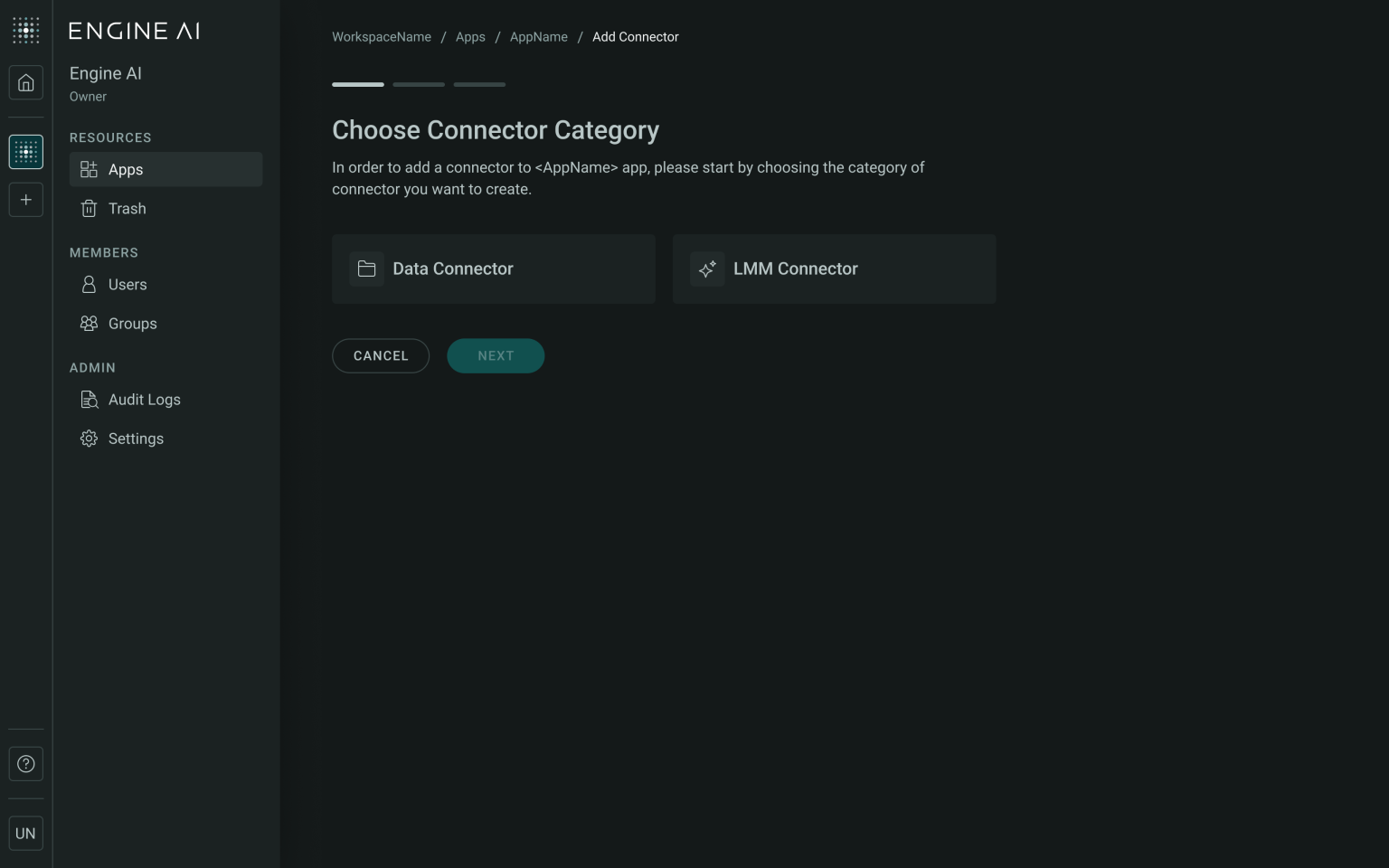 4. Choose Connector Type: Depending on the selected category you can choose the type of the connector.
4. Choose Connector Type: Depending on the selected category you can choose the type of the connector.
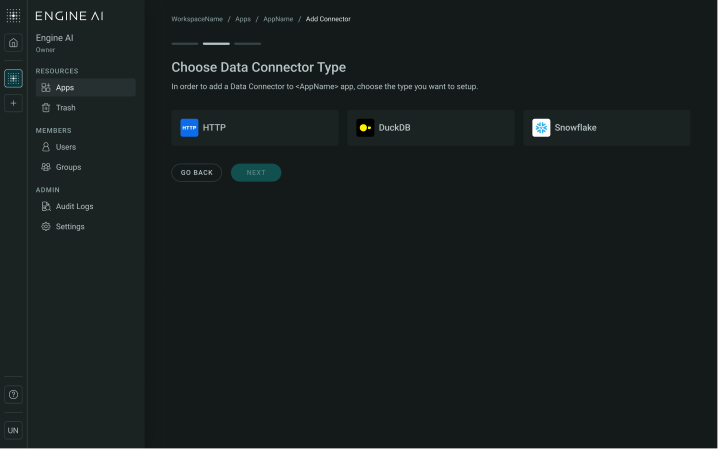
 5. Set Up the Selected Connector: Continue with the setup process specific to your chosen connector.
5. Set Up the Selected Connector: Continue with the setup process specific to your chosen connector.
Refer to the setup instructions to complete the configuration of the connector:
Connector Details#
Click Edit Connector in the context menu of the connector to modify:
- Connector Name and Slug;
- Connector Description;
- Connector’s Configurations.
Note
The Edit Connector option is available only to users with Managers and Writers access in the app.
On the App Management page, Managers and Writers can click See Details button in the context menu and open the side panel, where you can:
- View Connector’s Configurations: See configurations details that were set up previously on the Details tab of the side panel.
- See dependant resources: View the list of the resources where connector is being used. You can view them on the Dashboards and Agents tabs of the side panel.
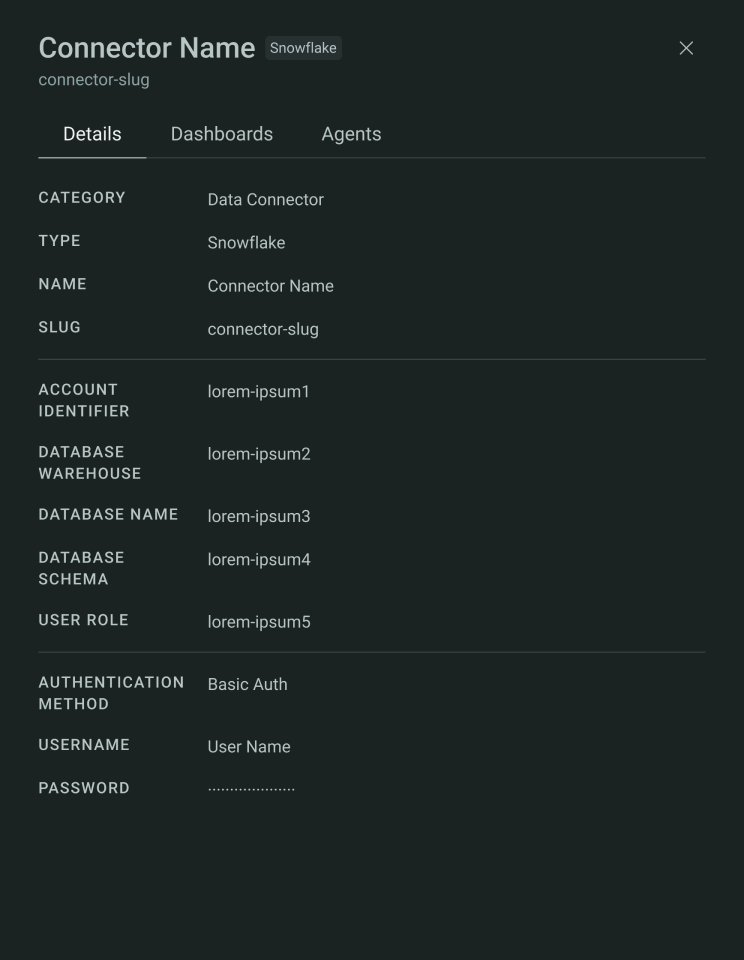
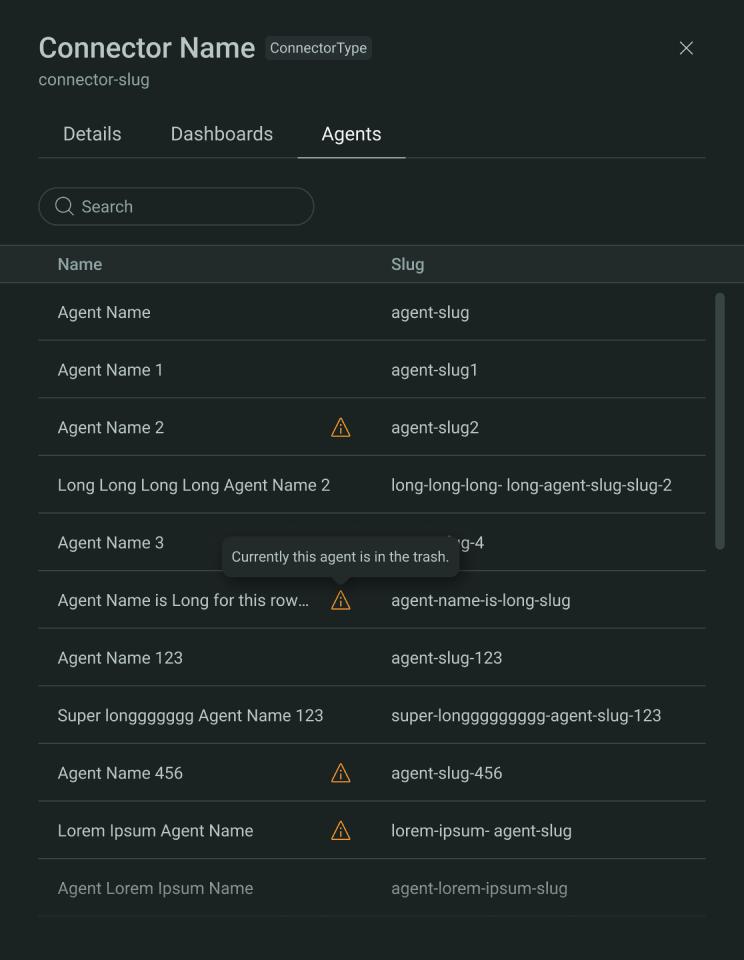
Deleting Connectors#
If you want to delete a data connector, our platform will handle the action based on the following two scenarios:
-
Data Connector is in Use You cannot delete a data connector that is in use by any other resource: a dashboard or an agent. To delete the connector firstly:
- Replace the connector in affected dashboards, widgets or agents;
- Delete all the versions of the resources that use this data connector.
After deleting the versions or replacing all the connectors in all affected resources, you will be able to delete the connector.
You can check which resources are used in this resource on the Details Tab.
2. Data Connector is Not in Use
If a data connector has no dependencies in dashboards or widgets, you can delete it without restrictions.
Note
Managers and Writers can delete data connectors, while Readers cannot.